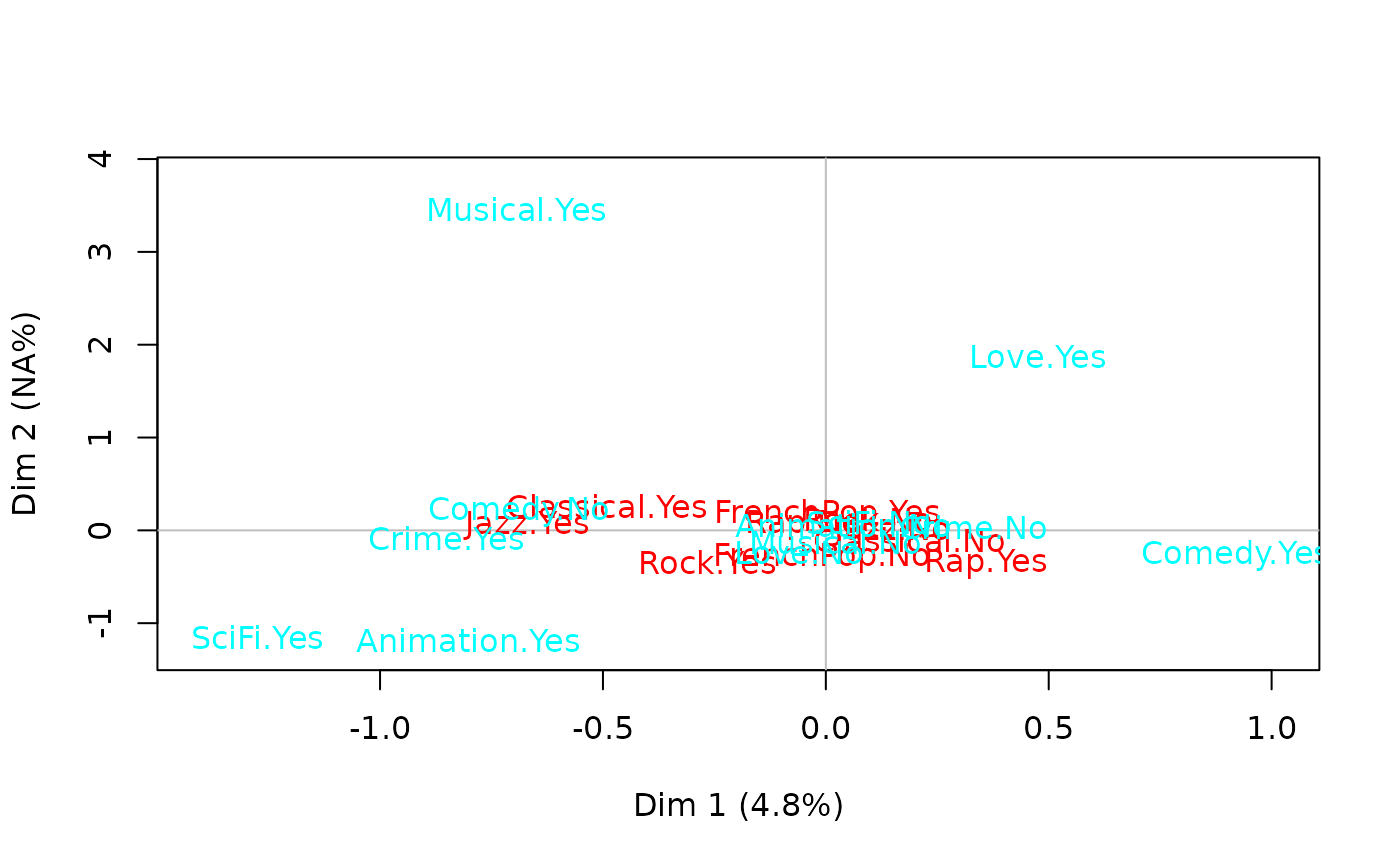Multiple Factor Analysis
multiMCA.RdPerforms Multiple Factor Analysis, drawing on the work of Escofier and Pages (1994). It allows the use of MCA variants (e.g. specific MCA or class specific MCA) as inputs.
multiMCA(l_mca, ncp = 5, compute.rv = FALSE)Arguments
Details
This function binds individual coordinates from every MCA in l_mca argument, weights them by the first eigenvalue, and the resulting data frame is used as input for Principal Component Analysis (PCA).
Value
Returns an object of class multiMCA, i.e. a list:
- eig
a list of numeric vector for eigenvalues, percentage of variance and cumulative percentage of variance
- var
a list of matrices with results for input MCAs components (coordinates, correlations between variables and axes, squared cosines, contributions)
- ind
a list of matrices with results for individuals (coordinates, squared cosines, contributions)
- call
a list with informations about input data
- VAR
a list of matrices with results for categories and variables in the input MCAs (coordinates, squared cosines, test-values, variances)
- my.mca
lists the content of the objects in
l_mcaargument- RV
a matrix of RV coefficients
References
Escofier, B. and Pages, J. (1994) "Multiple Factor Analysis (AFMULT package)". Computational Statistics and Data Analysis, 18, 121-140.
See also
Examples
data(Taste)
# specific MCA on music variables of Taste example data set
mca1 <- speMCA(Taste[,1:5], excl = c(3,6,9,12,15))
# specific MCA on movie variables of Taste example data set
mca2 <- speMCA(Taste[,6:11], excl = c(3,6,9,12,15,18))
# Multiple Factor Analysis of the two sets of variables
mfa <- multiMCA(list(mca1,mca2))
plot.multiMCA(mfa)
